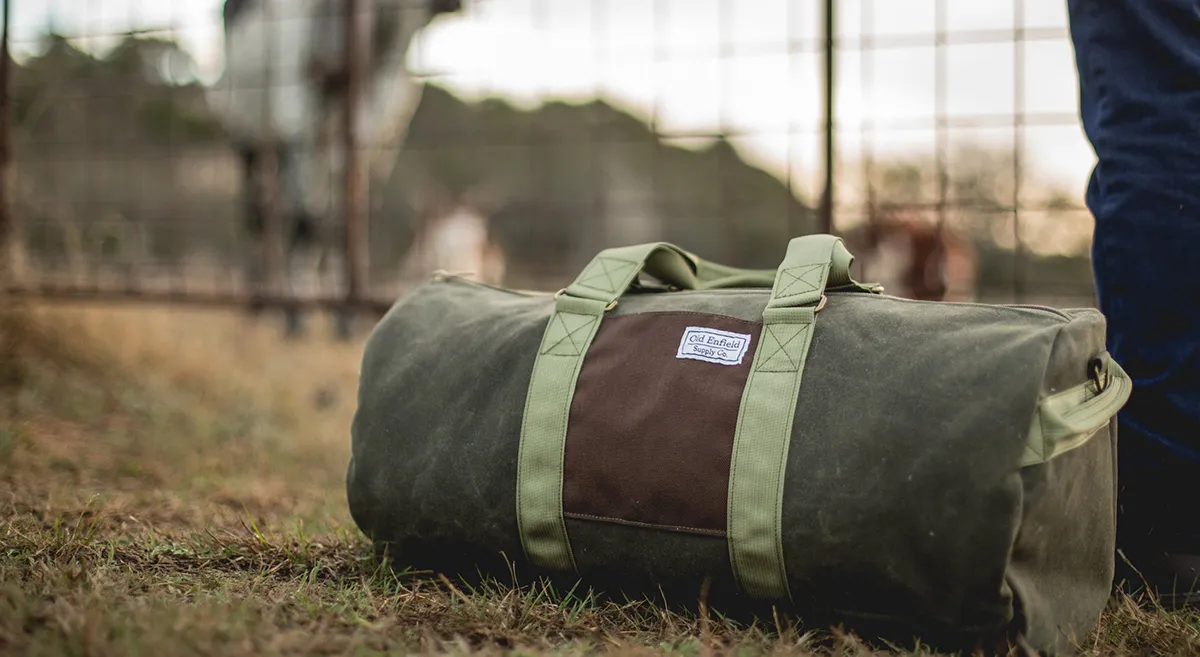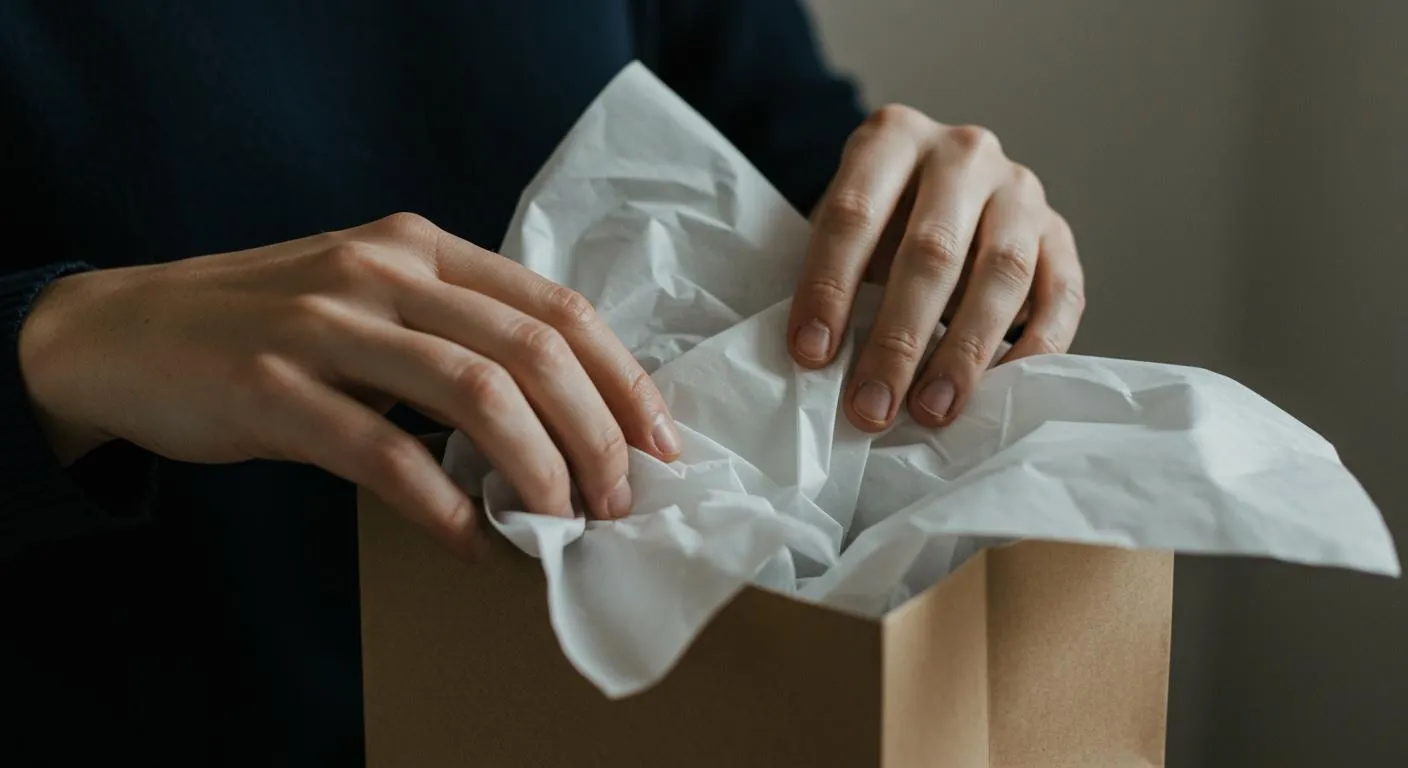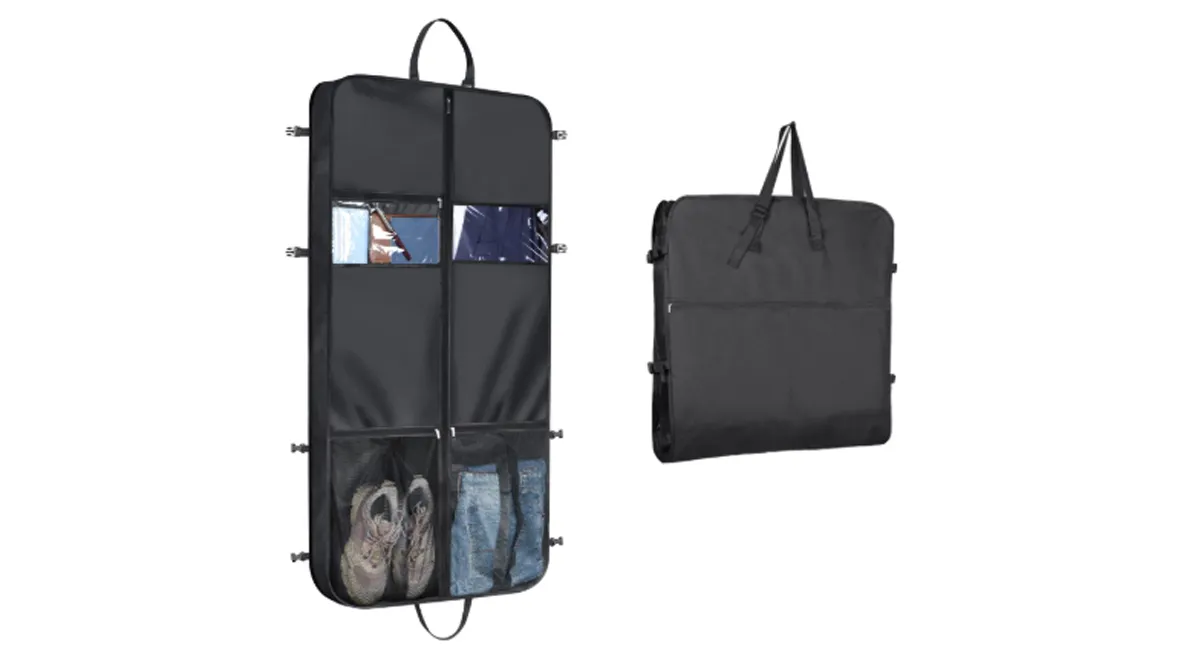Non woven bags are common in grocery stores, trade shows and event giveaways. They are lightweight, reusable and eco friendly. On their own they may look plain, but with printing they quickly transform into marketing tools, thoughtful gifts or stylish everyday accessories.
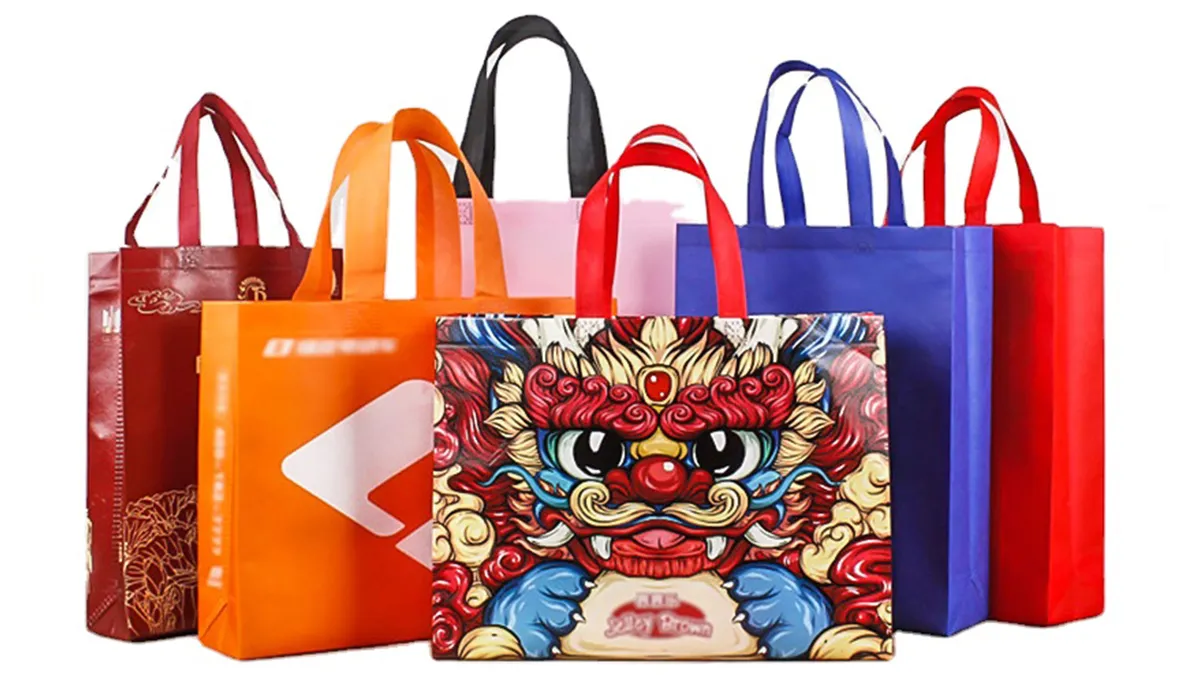
In this guide, we will go deep into how to print on non woven bags. We will talk about what these bags are made of, the most popular printing techniques, the pros and cons of each method, and even share some tips to help you get the best results. By the end, you will know exactly which printing style fits your needs, whether you are ordering bags for a company event, a retail store, or your own brand.
What Are Non Woven Bags Made Of
Non woven bags are not the same as regular fabric bags. Instead of being woven from threads like cotton or jute, non woven fabric is made from polypropylene (PP), a type of plastic that is melted down and then pressed together into sheets. Think of it as a kind of fabric made without weaving or knitting—that is why it is called “non woven.”
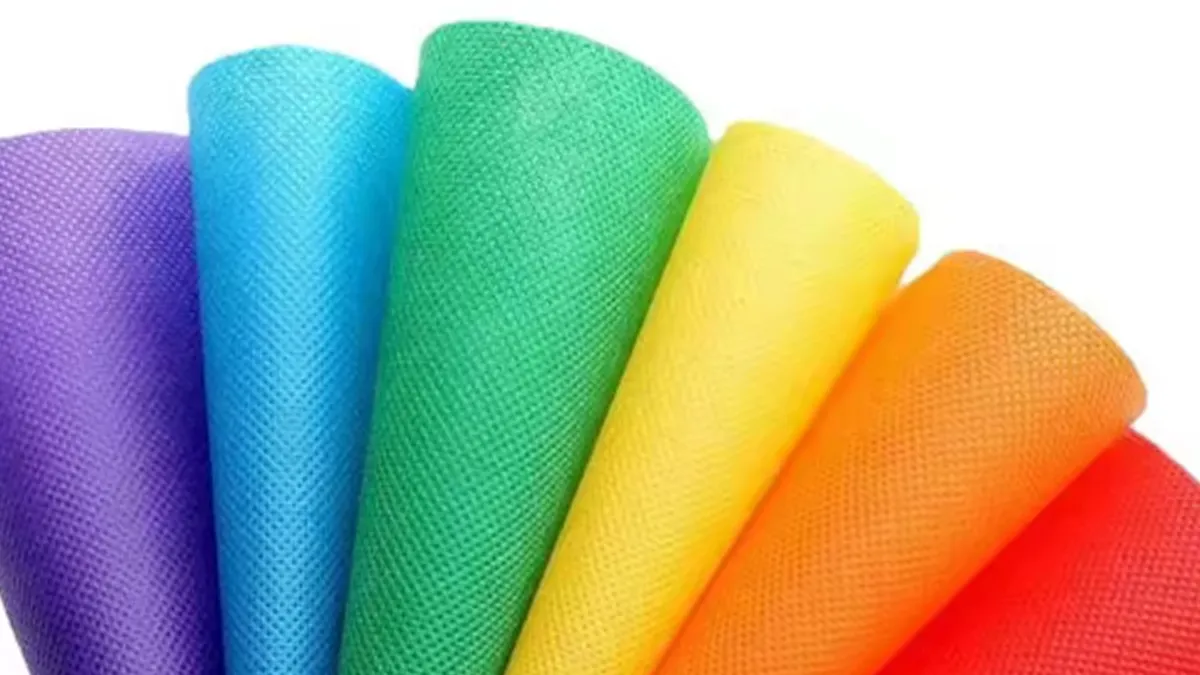
Polypropylene is lightweight, strong, and inexpensive. These qualities make it perfect for mass production of shopping bags, promotional bags, and giveaway totes. The fabric also has a slightly rough texture, which is great for printing. That is why so many companies use non woven bags to showcase their logos and brand names.
Non woven bags are available in many thickness levels, measured in GSM (grams per square meter). Thicker fabric feels sturdier and lasts longer, while thinner fabric is more flexible and lightweight. The choice of GSM often influences which printing method works best.
Why Print on Non Woven Bags
So why should you bother printing on non woven bags. The answer is simple: visibility and value.
A plain bag is just a bag. But when you add a logo, slogan, or colorful design, that bag becomes a walking advertisement. Every time someone carries it to the store, to work, or around town, your brand gets free exposure. That is why non woven bags are one of the most popular promotional products worldwide.
Printing also adds perceived value. A plain giveaway bag might be tossed aside, but a well designed, colorful printed bag is more likely to be kept, reused, and appreciated. For retailers, this means customers carry your branding around long after they leave your store. For event organizers, it means people remember your event every time they use the bag.
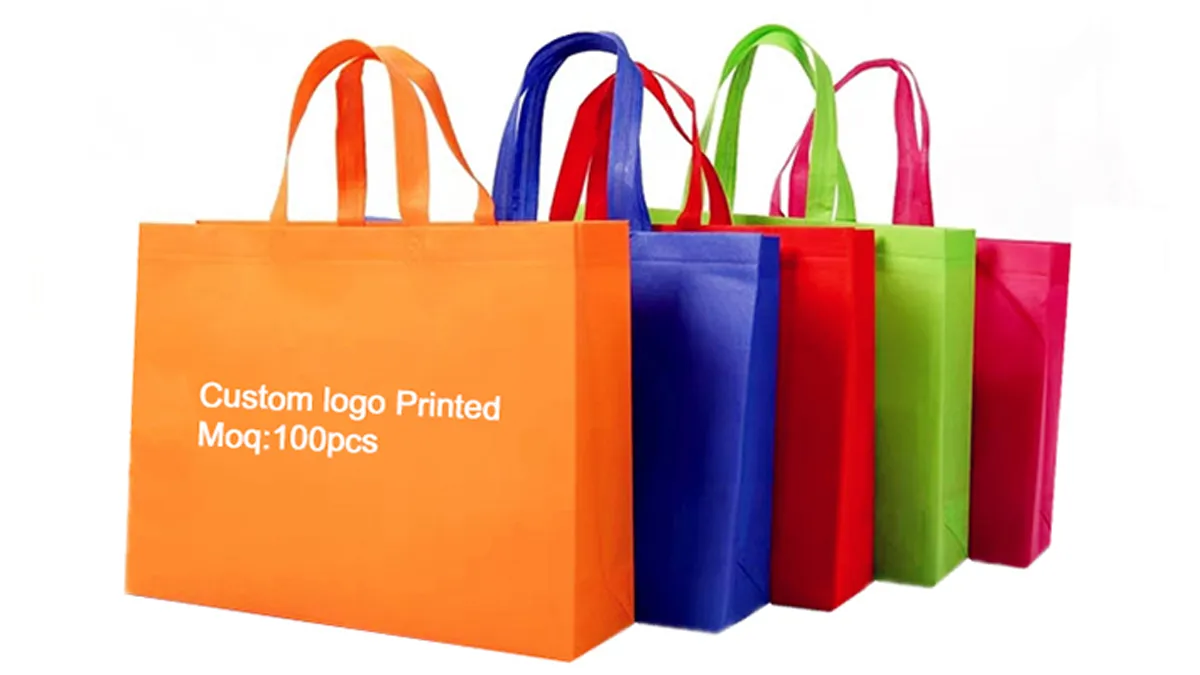
Popular Printing Techniques for Non Woven Bags
There are many ways to print on non woven bags, each with its own strengths and limitations. Let us break them down one by one.
Screen Printing
Screen printing is one of the most common methods for non woven bags. Ink is pushed through a fine mesh screen onto the bag, creating bold and durable prints.
- Why it works well: Screen printing is affordable, especially for large quantities. The colors are vibrant and stand out clearly against the fabric.
- Limitations: It is not ideal for very detailed or multi color designs. Each color requires a separate screen, which increases cost for complex artwork.
- Best use: Simple logos, bold text, large batch orders.
Heat Transfer Printing
Heat transfer printing uses a design printed on transfer paper, which is then applied to the bag using heat and pressure.
- Why it works well: It allows for complex, multi color designs with gradients and detailed artwork. It looks sharp and smooth on the fabric.
- Limitations: It is not as durable as screen printing. Over time, the design may peel or crack, especially with heavy use.
- Best use: Small batches, colorful designs, custom artwork.
Gravure Printing
Gravure printing is a high end option used for mass production. The design is engraved onto a cylinder, which then transfers the ink onto the fabric.
- Why it works well: It produces sharp, detailed images at high speed. Perfect for massive runs of bags, such as supermarket giveaways.
- Limitations: The setup cost is high, so it only makes sense for very large orders.
- Best use: Large scale production, corporate campaigns.
Digital Printing
Digital printing works like an inkjet printer, spraying ink directly onto the fabric.
- Why it works well: It is perfect for full color images, photo quality prints, and one off customizations. No screens or plates are needed.
- Limitations: It is slower and more expensive per unit compared to screen printing. The colors may not be as durable with heavy washing.
- Best use: Small runs, photo designs, personalized items.
Flexographic Printing
Flexographic printing uses flexible plates and fast drying inks. It is commonly used for printing on packaging materials, including non woven bags.
- Why it works well: It is fast and efficient, making it cost effective for medium to large runs.
- Limitations: The setup cost is higher than screen printing, and it is not great for very detailed designs.
- Best use: Promotional bags, retail bags.
Sublimation Printing
Sublimation printing uses heat to transfer dye into the fibers of the fabric.
- Why it works well: The colors are vivid and long lasting because the ink actually becomes part of the fabric.
- Limitations: Sublimation does not work directly on standard polypropylene non woven material. It requires a special coating or laminated surface.
- Best use: Premium custom bags, high quality graphics.
Is Non Woven Bags Waterproof
Non woven bags are naturally resistant to water, but they are not completely waterproof. Light rain or a small spill will not soak through immediately, but if the bag is fully exposed to water, it can eventually seep through.
Some non woven bags are laminated with an extra coating to make them more water resistant. This also creates a smoother surface, which can affect how well certain printing methods work. For example, lamination is great for heat transfer and gravure printing, but screen printing might need special ink to stick properly.
Is Non Woven Fabric Eco Friendly
One of the main reasons people love non woven bags is because they are seen as eco friendly alternatives to plastic bags. Polypropylene is recyclable and reusable, and the bags are much more durable than single use plastic. That means fewer bags are needed overall, reducing waste.
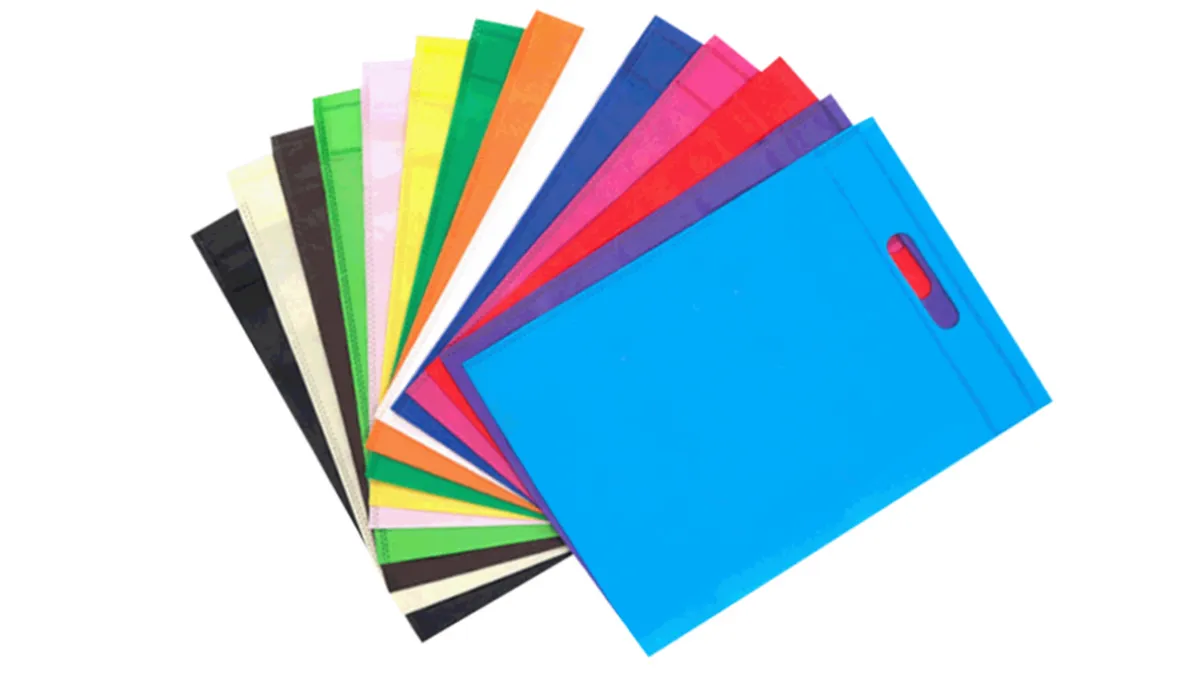
Of course, the eco friendliness also depends on how the bags are used. If they are reused many times, they clearly help the environment. Printing can also play a role—using non toxic, water based inks makes the bags safer and more sustainable.
Comparison Table: Printing Methods for Non Woven Bags
| Printing Method | Advantages | Disadvantages | Best For |
|---|---|---|---|
| Screen Printing | Durable, vibrant colors, low cost | Limited detail, few colors | Bulk, simple logos |
| Heat Transfer | Sharp, colorful, flexible design | Less durable, higher cost | Small runs, detailed graphics |
| Gravure Printing | High speed, detailed, vivid color | High setup cost | Mass production |
| Digital Printing | Photo quality, flexible | Higher cost, slower speed | Custom designs, small orders |
| Flexographic | Fast, cost effective in bulk | High setup, less detail | Supermarket and retail bags |
| Sublimation | Vivid, long lasting | Material limitations | Premium custom projects |
Step by Step: How to Print on Non Woven Bags
1. Choose your printing method
The first step is deciding how you want your design to appear. Think about your budget, the number of bags you need, and the type of artwork. Screen printing is affordable and reliable for bulk orders with simple logos or text. Digital printing is better when you want full color images or small customized runs. Heat transfer works well for coated or laminated bags that need crisp details. Matching the method to your project saves time and ensures quality.
2. Prepare your design file
Your print is only as good as your artwork. Always use high resolution files—vector formats like AI, EPS, or PDF are best because they keep lines sharp at any size. If you are working with images, stick to at least 300 dpi. Double check that the colors match your brand guidelines. This step prevents blurry results and makes sure your logo looks professional.
3. Test the bag material
Non woven bags come in different GSM (grams per square meter) and may have coatings or laminations. These factors affect how well ink sticks to the surface. For example, a plain 80 GSM bag takes ink differently compared to a glossy laminated one. Testing a small area helps you confirm whether the chosen ink and method will give long lasting results.
4. Print a sample prototype
Never skip the sample stage. Printing a prototype lets you see the design on the actual material, check color accuracy, and spot alignment issues. This is the moment to make small adjustments—whether that is tweaking the font size, shifting placement, or changing ink type. A sample acts as your guarantee before full production.
5. Run the full order
Once you approve the sample, production can begin. At this stage, machines are set up for speed and efficiency, especially for large runs. Screen printing presses or digital printers handle hundreds or thousands of bags consistently. Clear communication with your manufacturer ensures timelines and quality stay on track.
6. Perform a quality check
After printing, inspect the finished bags carefully. Look for issues like uneven colors, smudges, or missing details. A good manufacturer will have quality control in place, but it is always wise to do a final check yourself. Consistency across all bags is key when you are representing your brand.
7. Pack and deliver
The last step is packaging. Bags should be neatly folded, stacked, and packed in protective cartons. If you are selling them as retail items or gifts, you can add custom packaging like tissue paper, poly bags, or branded boxes. Good presentation makes a strong impression and protects the prints during delivery.
Tips for Best Printing Results
Choose eco friendly inks whenever possible
Printing is not just about looks—it is also about responsibility. Water based or soy based inks are safer for the environment and align perfectly with the eco friendly message of reusable non woven bags. They also tend to have softer prints that feel nice to the touch.
Keep your design simple and bold
Large logos, clean fonts and solid colors usually make the strongest impression. Intricate patterns or tiny text can get lost on textured surfaces. A simple, bold design ensures your brand name or message is visible from a distance, turning the bag into a walking advertisement.
Match the printing method to your order size
The right technique can save you time and money. Screen printing works best for bulk orders with straightforward designs, while digital printing is ideal for small runs or when you need full color images. Heat transfer is a good choice if you want sharp details on coated or laminated bags.
Always request and approve a sample before mass production
Never skip this step. A sample lets you check the colors, alignment, and ink adhesion on the actual bag material. Catching errors early avoids costly reprints and ensures the final product matches your vision.
Store printed bags properly
Even the best print can fade or crack if bags are stored carelessly. Keep them in a cool, dry place away from direct sunlight. Avoid stacking heavy boxes on top to prevent creases that might damage the print. Good storage habits keep your bags looking fresh until they reach customers.
Common Mistakes to Avoid
Choosing the wrong printing method for your design
Not every design works with every printing technique. For example, screen printing is great for bold logos and solid colors, but it is not the best choice if you want to print detailed photos or gradients. Trying to force the wrong method usually results in poor quality prints and wasted money. The key is to match your design style with the right method—screen printing for simple graphics, heat transfer for detailed images, or digital printing for full color photos.
Using low resolution artwork
Even the best printer cannot fix a blurry file. If the original logo or design is low resolution, the final print will look fuzzy and unprofessional. A simple rule of thumb is to always provide vector files (AI, EPS, PDF) or high resolution images (at least 300 dpi). Clear, sharp files give you crisp, vibrant results that make your bag stand out.
Skipping an ink adhesion test on coated or laminated bags
Some non woven bags come with a glossy or laminated surface. Standard inks may not stick well to these finishes, which leads to smudging, peeling, or fading after a few uses. Always test ink adhesion before going into mass production. A quick sample run helps you avoid expensive reprints and ensures the print lasts as long as the bag itself.
Overlooking eco friendly inks
Many buyers today care about sustainability. If you use solvent based or toxic inks, it can create a negative impression and weaken your eco friendly message. Instead, choose water based or soy based inks that are safer for the environment. Not only do they align with the idea of reusable bags, but they also strengthen your brand image as a responsible manufacturer.
Conclusion
Printing turns non woven bags from simple carriers into powerful branding tools. Whether you go for screen printing, heat transfer, digital printing, or gravure, the right method depends on your design, quantity, and budget.
At the end of the day, how to print on non woven bags is about choosing a process that matches your needs. For small custom runs, digital and heat transfer shine. For bold logos in bulk, screen printing is unbeatable. For mass campaigns, gravure and flexographic are the go to choices.
As a manufacturer, we specialize in producing and printing non woven bags with a wide range of methods. We support OEM, ODM, and wholesale orders to help brands bring their designs to life. If you are ready to create custom printed bags for your business or event, reach out to us for samples and a quick quote.
FAQ
What is the best printing method for non woven bags?
The best method depends on your needs. For simple, bold logos in bulk, screen printing is usually the most cost effective. If you need detailed, multi color artwork, heat transfer or digital printing might be better. For massive supermarket style orders, gravure or flexographic printing works best.
Can you print photos on non woven bags?
Yes, but not with every method. Screen printing will not capture photo detail well. Digital printing is the best option for photo quality images, while heat transfer can also handle complex graphics. Sublimation printing gives vivid results, but it requires special coated fabric.
How durable is printing on non woven bags?
Durability depends on the method. Screen printing is very tough and lasts a long time. Heat transfer looks sharp but may peel with heavy use. Gravure printing is durable for mass produced bags. Digital printing can fade faster if the bag is washed frequently.
Are printed non woven bags eco friendly?
They can be, especially if you use water based inks and encourage reuse. The bags themselves are recyclable and reusable, so adding printing does not change that. Choosing safe inks makes the bags more sustainable.
What is the cost of printing on non woven bags?
The cost depends on the method and order size. Screen printing is cheapest for large orders. Digital and heat transfer cost more per bag but work for small batches. Gravure and flexographic printing have high setup costs but low unit costs for very large orders.

